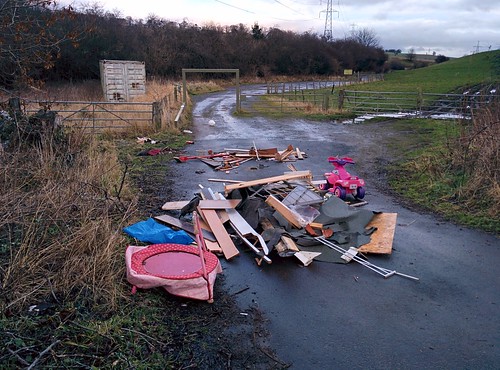Background and Existing Condition:
The Pencaitland Railway Path is 10.2km long. The western part of the railway to #Ormiston was part of a branch line constructed in 1867 by the North British Railway Company. Although primarily a mineral line, it also took passenger trains from Edinburgh to Macmerry. The section of line from Ormiston to West Saltoun was part of the Gifford and Garvald light railway that opened in 1901. The remaining section of line closed in May 1965 and the majority of the route was purchased by East Lothian District Council during the 1970’s.
The route is now a 2.5m to 4m wide mainly whin dust surfaced path on a combination of embankments and cuttings. There are a number of wet and muddy sections and an obvious drainage problem at the western end of the path near Crossgatehall. The remainder of the path is comparatively drier although the trend towards a warmer and wetter climate has resulted in a soft surface and evidence of damage to the surface as a result. There are a number of access points on to the path, both formal and informal. Car parks exist at Saltoun Station, Wester Pencaitland, Ormiston and Crossgatehall. Signage is poor to and at the main access points and significant improvements could be made to encourage more people to use the route. In particular, the signage to the car parks is poor and several of the respondents stated that they only found the route by accident.
The railway path is a Core Path and forms part of National Route 196 (Haddington to Penicuik).
Landownership:
The majority of the railway path is owned by East Lothian Council. The western end of the route near Crossgatehall is in private ownership and is leased to the Council. An approach was made to the landowner for comment on any proposals and the response is attached as an Annex to the main report.
Existing uses:
The path is currently used by walkers, runners, cyclists and horse riders. Whilst many are happy with the current surface, there are a number of respondents who have stated that they would use the route more if the surface was drier and firmer. Others have commented that the wet sections of path make walking with children or cycling difficult, especially through the winter months. Horse riders generally have commented that they like the current surface.
Route options:
The brief for the study asked the consultant to consider surfacing options and “to assess the feasibility of resurfacing the railway paths to enhance visitor experience and encourage new users”. However, surfacing options cannot be seen in isolation and many of the comments from those who responded to the consultation stated that signage to the railway paths, signage to facilities from the railway paths and access points could be improved as a means of encouraging wider use. Improvements to access points could include removing steps and replacing with a ramp as appropriate, formalising desire lines and introducing entrance features. This work is outwith the remit of this study and should be considered separately. In addition, an interpretive plan should be undertaken for the railway paths in order to engage with the users (especially children) and encourage repeat visits.
The studies detailed above in paragraph 5 have shown that providing good quality facilities for walkers and cyclists increases usage and this will be taken into account in the following path options appraisal.
The following 3 options will be considered in order to enhance the visitor experience and encourage new users:
1. Leave the current surface, improve access points, improve signage;
2. Resurface with a semi-bound surface eg Toptrec , improve access points, improve signage;
3. Resurface with a sealed material eg Bitmac (DBM), improve access points, improve signage.
The route is currently between 2.5m and 4m along the full length, with the majority of the route being of the narrower width as this was a single track line. Any surfacing of the route would therefore have to accommodate all users as there is not enough width to have a segregated route. The vegetation at the sides of the track is already cut back to give a wide and high useable corridor and this does increase the useable width.
Conclusions:
There are a number of options available for the Pencaitland Railway Path from maintaining the status quo, to a full resurface of the path. Of the 97 responses to the consultation, the majority were about the railway paths and these should therefore be taken into account in any decision. Many of the cyclists and walkers who responded requested a firmer and drier surface although others stated that it was fine for recreational use. Horse riders do not wish a hard or sealed surface and others commented that this would be “urbanising” the countryside. A good compromise that would suit all users is therefore Toptrec. This is a recycled material that looks similar to the existing surface, but as it has a degree of asphalt material, it forms a drier and hence firmer surface than then existing whin dust. Midlothian Council has recently laid Toptrec on a similar path and it has been well received by all users. It is therefore recommended that the Pencaitland Railway Path is resurfaced with Toptrec but with additional work being carried out to access points and a comprehensive signing and interpretive programme to encourage wider use.



 posts
posts
